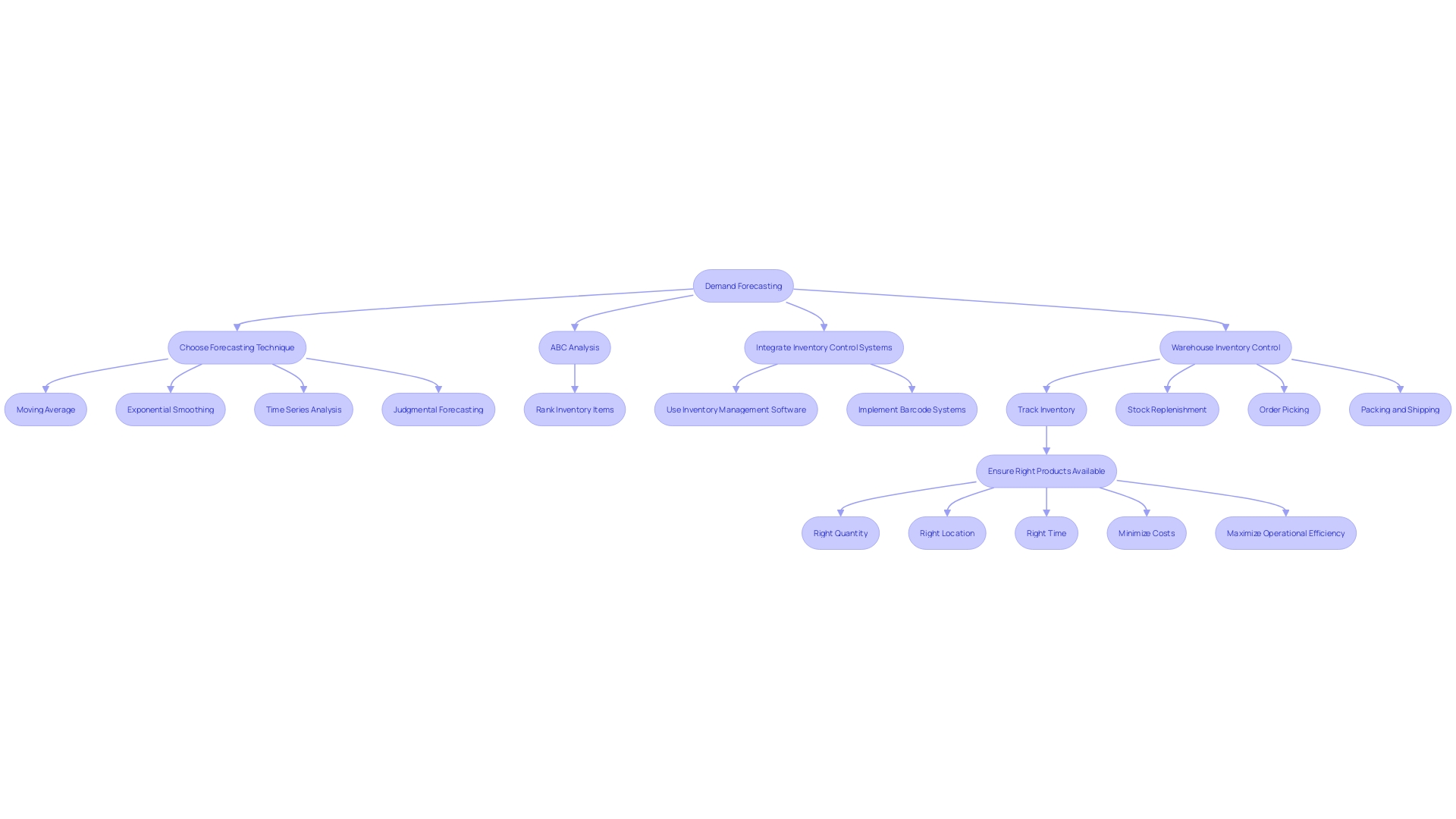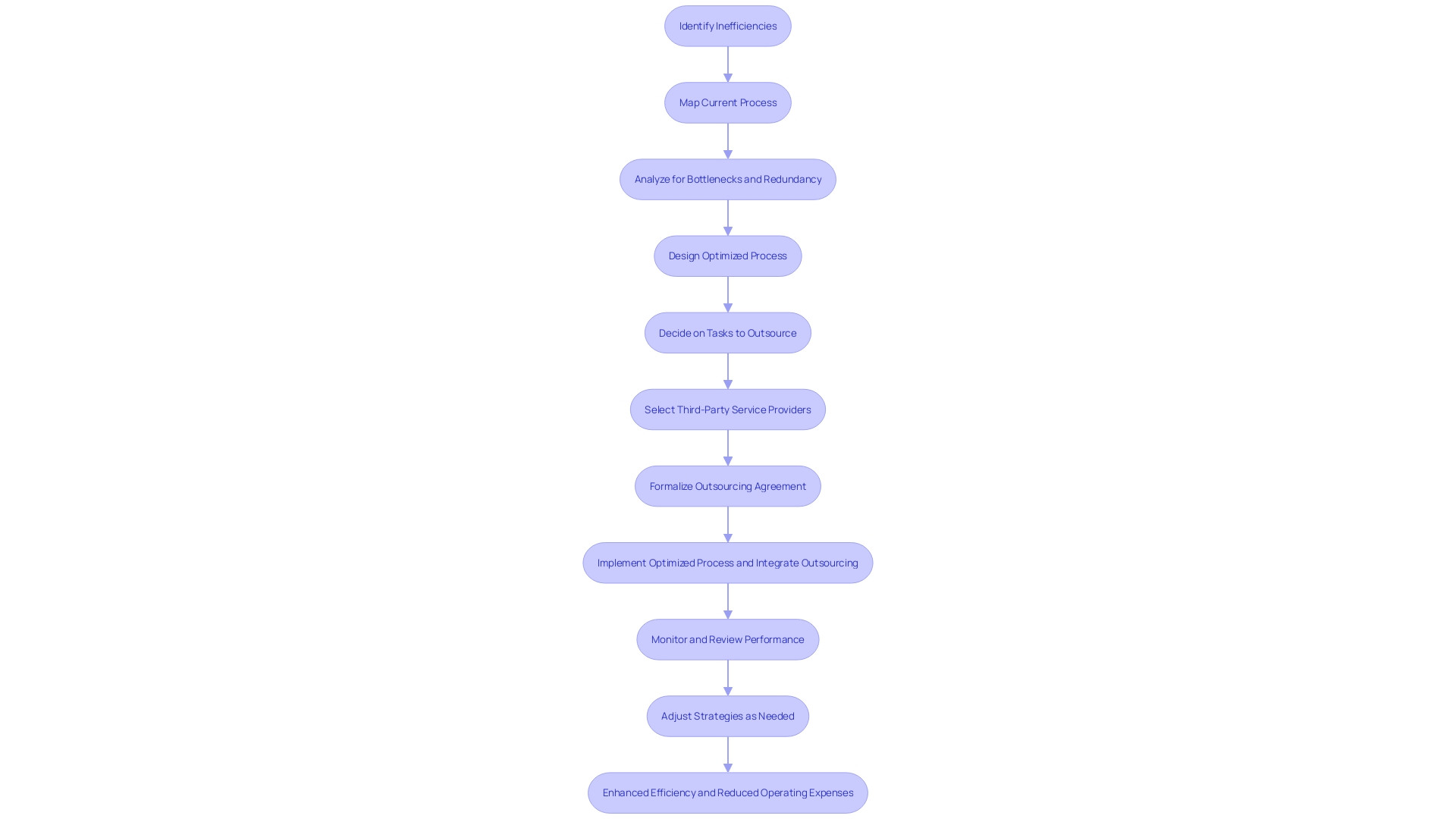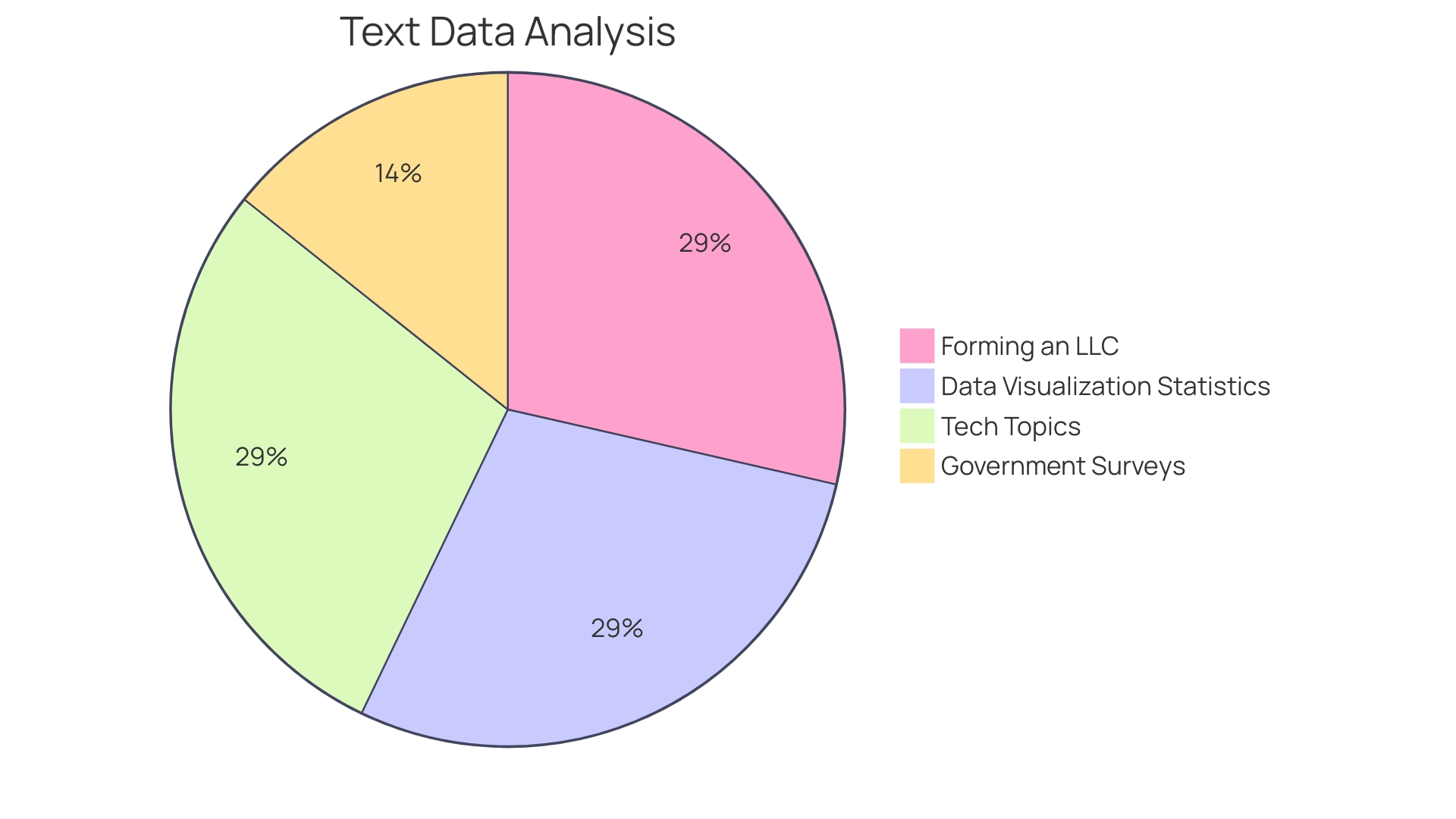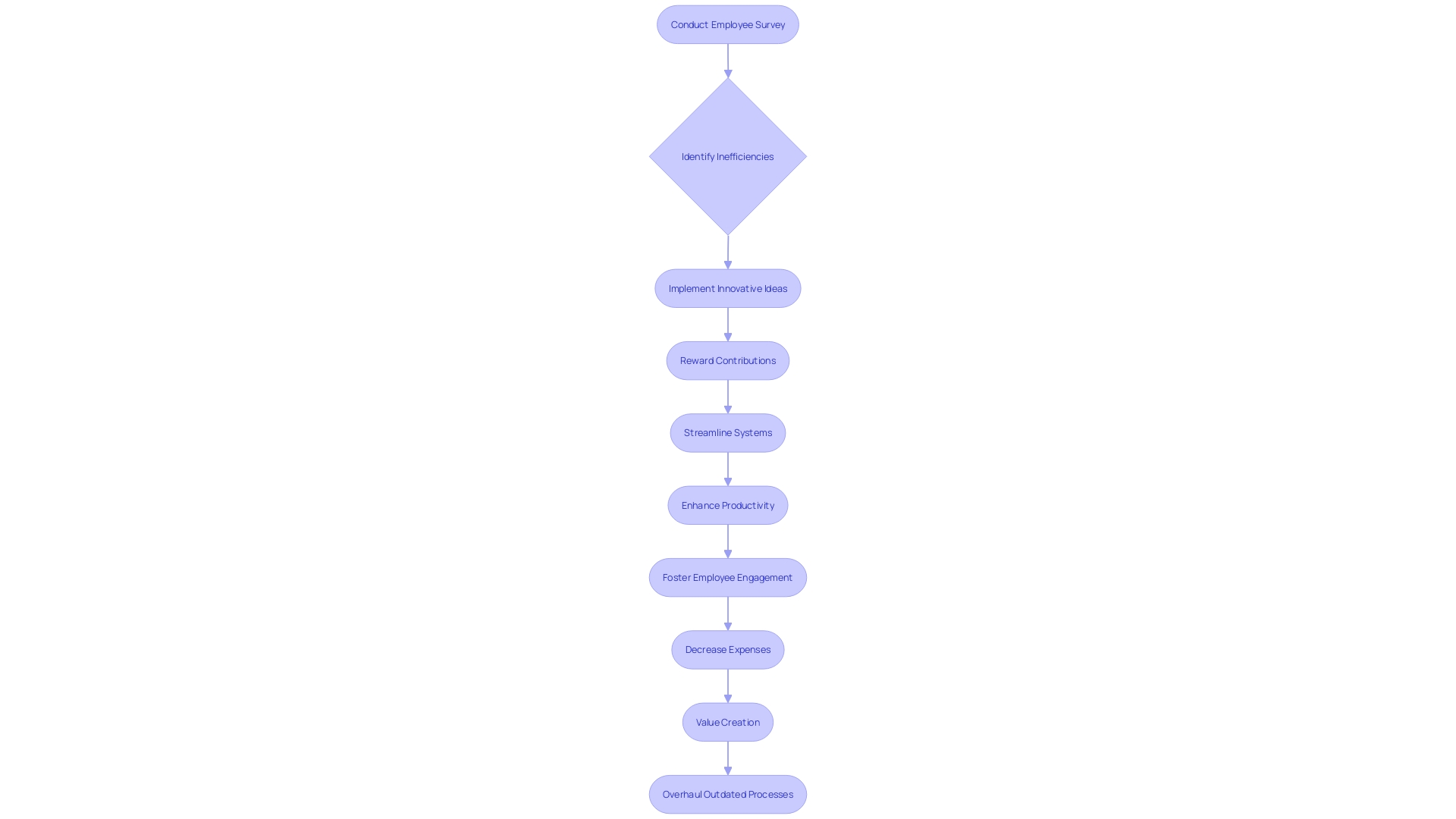Introduction
The manufacturing industry is undergoing a transformation driven by technological advancements and new business models. In this article, we will explore practical strategies that CFOs can implement to enhance operational productivity and efficiency. From adopting lean manufacturing principles to leveraging automation, managing energy consumption, optimizing inventory, and outsourcing non-core activities, we will provide actionable insights to help CFOs navigate these changes.
We will also discuss the importance of adopting technology wisely, negotiating with vendors, implementing remote work, monitoring expenses carefully, and engaging employees in cost reduction efforts. By implementing these strategies, CFOs can position their organizations for success in the evolving manufacturing landscape.
Implement Lean Manufacturing
Adopting lean manufacturing principles is not just a cost-cutting measure; it's a strategic approach to enhancing efficiency across all operations. Rivian, a forward-thinking electric vehicle manufacturer, illustrates the impact of this strategy with their commitment to minimizing waste and achieving net-zero emissions by 2040. By focusing on the elimination of non-value-added activities, Rivian exemplifies how streamlining workflows and improving productivity can lead to substantial cost reductions. Similarly, Jubilant Ingrevia's Acetic Anhydride Plant demonstrates the power of digital transformation in a manufacturing setting. With only a lean staff, they manage Asia's largest production facility, emphasizing the importance of investing in smart tools and technology to maintain a competitive edge.
At the second annual Robotics & Automation Awards, the sentiment was clear: A holistic approach to integrating people, machines, data, and regulatory frameworks is essential for manufacturing success. This philosophy is echoed by Toyota Motor Corp.'s assembly plant in West Virginia, where a simple yet effective innovation led to massive savings. Such examples underscore the trend of digitization and automation in modern manufacturing, where informed decisions and strategic investments in technology pave the way for a more efficient and productive industry.
As we look to the future, it's evident that the manufacturing industry is being reshaped by technological advancements and new business models. The digitization of supply chains, adoption of automation, and robotics in production, and the use of data for informed decision-making are just some of the key trends driving this transformation. Manufacturers who inquire about personnel, quality standards, and technology use, and who invest in efficient and reliable tools, will find themselves well-positioned to improve their productivity and effectiveness.
Leverage Automation
Adopting automation has been a game-changer for organizations seeking to improve efficiency and reduce expenses. By integrating cutting-edge automation technologies, companies like Louvre Hotels Group have reaped substantial rewards. The hotel giant automated its rate code maintenance processes with the expertise of RobosizeME, a pioneer in automation solutions, resulting in an impressive reduction of manual hours—188 hours saved per month on rate code headers and 386 hours on rate code details.
Similarly, St. James Winery's dedication to quality and innovation has made it Missouri's most celebrated winery. Their automation journey underscores the widespread adoption of such technologies across various industries, from hospitality to winemaking.
Manufacturing, where safety and precision are paramount, has welcomed automation to mitigate risks and enhance productivity. Robots now perform tasks in high-risk zones, and artificial intelligence aids in predictive maintenance, safeguarding the longevity of machinery. With 3.5 million industrial robots valued at $15.7 billion in use, particularly in automotive and electronics sectors, automation's impact is evident.
The evolution towards 'Industry 4.0' signifies a shift towards a digital-first approach. The concept of a 'digital twin' exemplifies this, offering a virtual model that allows for in-depth analysis and optimization of production processes. This move is not just about technology—it's about reshaping the economic landscape, balancing the creation of new job opportunities with the potential displacement of traditional roles.
Service sectors are also experiencing an automation revolution, with chatbots, virtual assistants, and IoT devices becoming commonplace. These advancements are not limited to professional settings but are part of our daily lives, from self-checkout kiosks to streaming service algorithms.
However, this transformation brings its challenges, from workforce displacement to ethical implications. Understanding the interplay between human jobs and technological advances is crucial as we navigate this new era. Reports and studies emphasize the importance of being prepared, investing wisely, and considering the human element alongside digital assistants.
Ultimately, the goal of automation is to establish efficient, consistent, and autonomous processes, thus allowing organizations to concentrate on strategic growth and innovation. As highlighted by PwC's chief economist, Barret Kupelian, Ai's potential to create new industries and transform job markets is just beginning to emerge, and we are only seeing the 'tip of the iceberg.'
Manage Energy Consumption
To optimize costs, companies are increasingly embracing Smart Building Automation Systems (BAS), which can result in energy savings of 8% to 15%. These innovative systems use sensors, controls, and data analytics to optimize the functioning of building components such as lighting, HVAC, and security. For example, lighting can be adjusted automatically based on occupancy, and climate control systems can adapt to real-time usage patterns, resulting in substantial energy reduction.
Additionally, companies are transitioning to renewable energy sources, which are becoming more cost-effective. Solar and wind power are now competitive with traditional energy sources in many areas, and expenses are expected to keep decreasing. This shift not only supports financial savings but also contributes to a healthier environment by reducing fossil fuel consumption and emissions across multiple sectors.
By prioritizing energy conservation and environmentally-friendly methods, companies can greatly decrease their running expenses. For instance, adapting manufacturing processes to use more efficient machinery, improving building insulation, and utilizing energy-efficient appliances can lower energy demand. In the face of a global energy crisis, such measures are crucial to reduce dependence on expensive fossil fuels and to meet Net Zero Emissions targets by 2050.
To implement these strategies, companies may take into account their operational expenditure (OpEx) for maintaining energy systems and capital expenditure (CapEx) for investments in energy-efficient upgrades. While CapEx might be limited due to other critical expenses, giving priority to energy effectiveness can lead to long-term financial and environmental benefits, warranting the investment.
As organizations aim for efficiency and sustainability, the approach to energy management is becoming more sophisticated and aligned with broader economic and ecological goals. These efforts are not only beneficial for the companies themselves but also for the communities they serve, paving the way for a more equitable and sustainable future.
Optimize Inventory
Improving inventory management is a vital strategy for enterprises seeking to streamline their operations and enhance financial performance. By leveraging advanced inventory management techniques, such as demand forecasting and ABC analysis, organizations can predict customer demand with greater accuracy. Demand forecasting employs methodologies like moving averages, exponential smoothing, and time series analysis to determine the optimal inventory levels required to meet future sales without incurring excess stock or stockouts. While no prediction can ensure flawlessness because of unforeseeable market conditions, enhancing these forecasts is crucial for managing a streamlined inventory and evading unnecessary storage expenses.
In addition to forecasting, the ABC analysis technique categorizes inventory items by importance, enabling organizations to prioritize resources and focus on the most impactful products. This is particularly relevant in sectors undergoing significant change, such as the automotive industry's shift to electric vehicles (EVs). Here, inventory management becomes a central aspect of maintaining healthy cash flow amidst substantial investment in new technologies and value chains. By reducing product complexity and the number of unique components, companies can decrease their inventory levels, contributing to a more efficient supply chain.
Furthermore, the integration of inventory control systems, especially in the food and beverage manufacturing sector, provides robust lot and batch tracking capabilities. These systems ensure traceability of ingredients and finished products, which is essential for managing expiration dates and responding effectively to quality issues or recalls. In the end, efficient warehouse inventory control, which includes monitoring, restocking, and order completion tasks, is essential for guaranteeing that products are accessible at the required time and location, thereby meeting customer demand while minimizing expenses and improving productivity.

Outsource Non-Core Activities
Harnessing the power of outsourcing is an astute strategy for businesses looking to enhance efficiency and concentrate on their primary strengths. Engaging specialized third-party service providers to manage non-core functions not only streamlines operations but also liberates valuable resources. This strategic move can greatly reduce overhead expenses and enhance organizational flexibility, thereby allowing organizations to concentrate more on activities that are crucial to generating revenue and fostering corporate expansion.
For instance, AT&T's historical commitment to tradition and its operation in highly regulated industries led to an accretion of systems and policies over time. However, recognizing the need for change, the company took action after employee feedback highlighted the inefficiencies in their processes. Similarly, Delivery Hero addressed the issue of employees being locked out of their accounts—a hiccup affecting productivity—by revamping their IT service delivery, demonstrating the benefits of re-evaluating internal processes.
Furthermore, Enel's implementation of generative AI for IT service desk ticket resolution effectively slashed case resolution times from a full day to under two minutes, automating approximately 15% of tickets without human intervention. These examples highlight the transformative effect of outsourcing and process optimization, which can result in a substantial decrease in operating expenses and a more efficient approach to organizational operations.
In the realm of small enterprises, outsourcing is not synonymous with offshoring but is more about delegating specific tasks to external experts, which can lead to reduced labor and operational expenses. When executed thoughtfully, outsourcing enables companies to focus on their core competencies and strategic endeavors, ultimately fostering a more dynamic and competitive model.

Adopt Technology Wisely
Improving processes and cutting expenses is crucial in today's fast-paced corporate setting. To achieve this, many companies are turning to advanced technology solutions. Accounting software, for example, can revolutionize financial management by automating routine tasks, enhancing accuracy, and providing real-time insights into financial health. The integration of customer relationship management (CRM) systems is another powerful tool that can streamline customer interactions and bolster sales strategies.
A case in point is a leading automated testing equipment provider, which faced the challenge of modernizing its outdated IT infrastructure. By embracing a digital overhaul, they untangled a network of over 190 interdependent applications, paving the way for more streamlined operations and better service delivery. Likewise, a major financial services corporation in the United States experienced notable enhancements in effectiveness by modernizing their application structure, which directly aided their expansion endeavors.
These transformations are evidence of the crucial role of technology in reshaping trajectories, aiding in faster product launches, and enhancing competitive analysis. Cloud computing, particularly, has been a game-changer for the IT and software development industry, allowing for dynamic workload management and support for continuous integration and deployment processes.
Furthermore, Robotic Process Automation (RPA) is emerging as a transformative force in automating repetitive tasks across various platforms, freeing up human resources for more strategic initiatives. This automation extends from simple data entry to complex customer service interactions, showcasing the broad capabilities of RPA.
Recent studies, including one published in Management Science, highlight the strategic decisions that manufacturing plants must make regarding vertical integration. The research shows a clear shift in the production chains, facilitated by the internet, which allows for better coordination within and between companies. This evolution is indicative of the broader trend of leveraging internet-enabled technology to optimize production and transaction flows.
The confluence of technology and sustainability is also gaining momentum. Innovations in sustainability technology are playing a pivotal role in addressing environmental challenges while minimizing negative impacts. This includes efforts in renewable energy, waste reduction, and sustainable agriculture, all of which are integral to preserving the future without compromising present needs.
Statistics underscore the growing importance of digital transformation, with significant investments projected for AI, AR/VR, and IoT in the coming years. The incorporation of AI in different sectors is improving the manufacturing of products and provision of services, highlighting the potential of AI to enhance operational effectiveness.
In conclusion, as businesses navigate the complexities of today's market, the strategic implementation of technology is not just a competitive advantage but a necessity for sustained growth and efficiency.
Negotiate with Vendors
Cultivating robust partnerships with vendors and suppliers is a strategic move that can lead to a reduction in overall operating expenses. Engage in periodic contract negotiations to explore potential discounts or improved payment terms. Bulk purchasing is a strategic approach that can result in significant financial advantages, as it often secures more favorable pricing and terms. For example, by utilizing a should-price model, which breaks down a product's expense components and benchmarks them against industry data, organizations can pinpoint areas for price negotiations, challenging suppliers who may quote above fair market prices.
Tracking service issues and usage history is equally vital, enabling organizations to negotiate for service level agreements that include penalties for underperformance or bugs. This approach can lead to steep discounts while managing vendor maturity. Furthermore, integrating the overall expense of ownership analysis, encompassing both tangible and intangible expenses, into negotiations guarantees a thorough comprehension of all expenditures, including those that might be disregarded during the acquisition stage. Through these strategies, procurement shifts from a mere transactional activity to a strategic role that propels innovation and value across the company.
Implement Remote Work
Embracing remote work, companies like GitLab have demonstrated that distributed teams can foster collaboration and innovation, even when employees are spread across different time zones. This approach not only aligns with the seismic shift in work culture but also brings economic advantages. For instance, companies can achieve substantial savings by decreasing the requirement for physical office area, which in turn reduces utility expenditures and other overhead expenses.
Moreover, employees working remotely can save on daily expenditures such as commuting, meals, and formal attire. According to Bureau of Labor Statistics data, the average full-time employee can save around $4,600 annually by working from home. These savings are heightened by the fact that many remote workers report higher productivity levels, debunking the myth that remote work compromises efficiency.
The transition to remote work also offers a more inclusive work environment for diverse groups. The availability of remote roles has increased employment rates among working mothers, especially in fields that have been open to such arrangements even before the pandemic.
Including remote work as a strategic move, therefore, not only reduces costs but also taps into a wider talent pool and enhances employee satisfaction. As the trend continues to grow, with data showing a significant rise in the percentage of Canadians working from home since the mid-2010s, it's evident that remote work is not just a temporary fix but a long-term operational strategy with measurable benefits.
Monitor Expenses Carefully
To maintain profitability, it's crucial to regularly audit and adjust discretionary spending. Identify chances to decrease or remove expenses that do not encroach on the vital value or the core of organizational functions. With careful expense tracking and strong budgetary restrictions, organizations can refine their expenditure structures, enhancing the bottom line.
For instance, AT&T's historic approach to corporate policies illustrates how longstanding practices can become entrenched, sometimes leading to inefficiencies. By taking proactive measures, companies can evade such challenges, maintaining streamlined and current systems. This involves taking into account the overall expense of ownership, as emphasized by Apple's life cycle value proposition, instead of solely focusing on the initial purchase price.
Moreover, embracing remote work setups, as recommended in recent cost-cutting methodologies, not only trims expenses like office leases but also aligns with a broader trend towards a more flexible, digital-first work environment. This shift can also bolster a company's reputation as a forward-thinking and fiscally responsible entity.
Ultimately, comprehending and controlling operating costs—every expense involved in running an enterprise, from payroll to inventory—is fundamental. Expenses, along with the amount spent on goods sold (COGS), should only make up a portion of the revenue received to guarantee the success of the enterprise. By embracing a strategic method to expense management, guided by careful monitoring and analysis, businesses can attain efficiency without sacrificing service or product quality, aligning with long-term financial well-being and sustainability.

Engage Employees in Cost Reduction
Utilizing the combined wisdom and expertise of staff is a strategic method to eradicate inefficiencies and decrease expenses. A system of rewards or recognition can incentivize employees to contribute their innovative ideas for savings. For instance, AT&T's historical bureaucracies were uprooted when an employee survey highlighted widespread dissatisfaction, leading to a progressive overhaul of outdated processes. Similarly, Somerset Academies streamlined disjointed systems under the guidance of Austin Morgenroth, consolidating software to prevent operational lapses, thereby enhancing productivity and operational efficiency. With the WHO reporting a staggering loss of $1 trillion annually due to productivity issues linked to mental health, there's an undeniable need to cultivate a workplace that fosters wellbeing. This approach not only addresses cost reduction but also strengthens the organization's value creation by leveraging its workforce's potential, as employees who are engaged and valued often prove to be the most significant assets in driving a company's success.

Conclusion
In conclusion, CFOs in the manufacturing industry can enhance operational productivity and efficiency by adopting lean manufacturing principles, leveraging automation, managing energy consumption, optimizing inventory, outsourcing non-core activities, adopting technology wisely, negotiating with vendors, implementing remote work, monitoring expenses carefully, and engaging employees in cost reduction efforts.
These strategies, when implemented effectively, can lead to substantial cost reductions, streamlined workflows, and improved productivity. By investing in smart tools and technology, organizations can maintain a competitive edge and navigate the evolving manufacturing landscape successfully.
Furthermore, managing energy consumption through the adoption of Smart Building Automation Systems and transitioning to renewable energy sources can result in significant energy savings and a healthier environment. Optimizing inventory management techniques such as demand forecasting and ABC analysis can help organizations predict customer demand accurately, maintain lean inventory levels, and avoid unnecessary storage costs.
Outsourcing non-core activities to specialized third-party service providers can streamline operations, reduce overhead costs, and allow organizations to focus on revenue generation and corporate growth. Additionally, adopting technology wisely by implementing advanced solutions like accounting software and customer relationship management systems can automate routine tasks, enhance accuracy, and provide real-time insights into financial health and customer interactions.
Negotiating with vendors, embracing remote work, monitoring expenses carefully, and engaging employees in cost reduction efforts are also crucial strategies for CFOs. By cultivating robust partnerships, reducing physical office space, tracking expenses, and incentivizing employees to contribute innovative ideas, organizations can further reduce costs, enhance operational efficiency, and foster a more inclusive and productive work environment.
Overall, by implementing these practical strategies, CFOs can position their organizations for success in the evolving manufacturing landscape. These strategies not only enhance productivity and efficiency but also contribute to cost reduction, sustainability, and long-term financial health.
Upgrade your tools and technology to stay ahead in the evolving manufacturing landscape.




